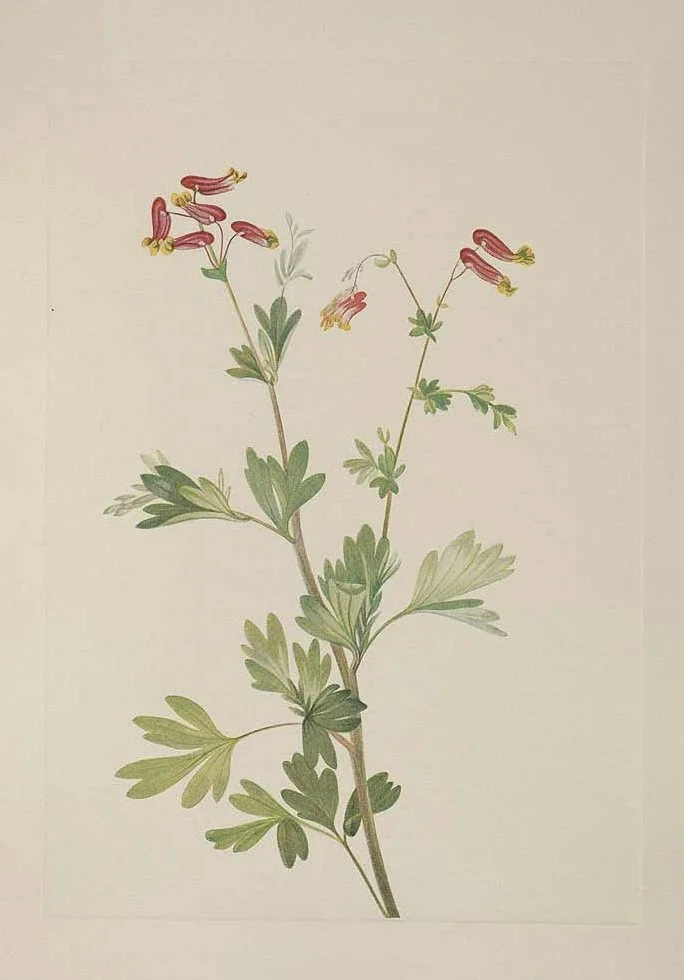Rock Harlequin
Rock Harlequin
ROCK HARLEQUIN SEEDS
Corydalis sempervirens
Charming and variable North American species. Found in and around mountain forests and rocky prairie margins subject to fire. In much of their native habitat these seeds only rarely germinate in the absence of fire, and exist primarily as a bank in the soil awaiting ideal conditions. Fire suppression measures in many regions have resulted in this species being listed as endangered or extirpated, but a seed can be very patient indeed.
This species can be annual or biennial depending on the conditions in which it grows. Where the plants are happy they may self-sow in such a way as to seem quite perennial, as many Corydalis species are wont to do. The persistent ferny semi-glaucus foliage and colorful little flowers are worth the trouble of trying to establish this species in the alpine, woodland, or dry shade garden. Very tolerant of poor shallow rocky soils and dappled shade. Will sometimes bloom all season in cool summer climates. Where summers are hot this species may go dormant, only to emerge again in the cool of autumn to begin blooming again, and these plants will sometimes overwinter to bloom again in the second or third year if they do not have the chance to set seed.
Coaxing the fresh seeds to life is challenging, but a small percentage of these seeds will usually germinate within a few weeks at room temperature in bright light without any special treatment. The rest will require stratification and/or smoke and heat treatment. Aged seed germinates much more easily than fresh seed, so do not throw out the packet in frustration if initial germination is disappointing! Be patient. At least a few seeds will probably germinate if sown directly into the garden in late winter or very early spring. Incorporating some carbonized material from burned brush piles into the soil may be enough to trick some seeds into germinating more promptly than they might otherwise.
Young plants feature a beautiful basal rosette of delicate foliage that rarely grows larger than 1'. Flowers appear in the first or second year on stems that sometimes reach well above the foliage. The flowers themselves are among my favorites, as they remind of little rainbow shiners. Very nice in a tiny bouquet tucked into vintage milk glass shakers.
Most often listed as hardy in zone 5, but this species is found in some of the coldest parts of Canada. Far more difficult to establish in sweltering southern regions than in the frozen north.
Packet contains at least 300 seeds.
